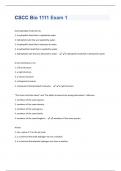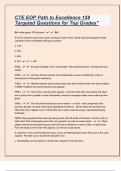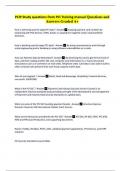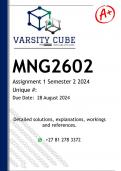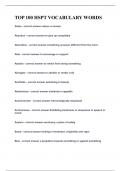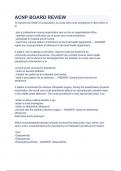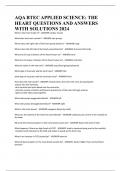Examen
CSCC Bio 1111 Exam 1 Questions And Answers Rated A+ New Update Assured Satisfaction
- Cours
- Établissement
A phospholipid molecule has 1. a hydrophilic head that is repelled by water. 2. hydrophilic tails that are repelled by water. 3. a hydrophilic head that is attracted to water. 4. a hydrophobic head that is repelled by water. 5. hydrophobic tails that are attracted to water. - a hydrophilic hea...
[Montrer plus]
